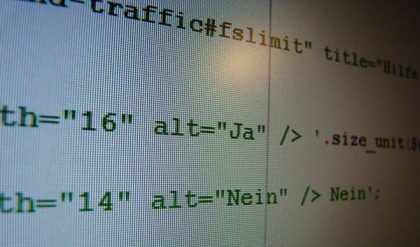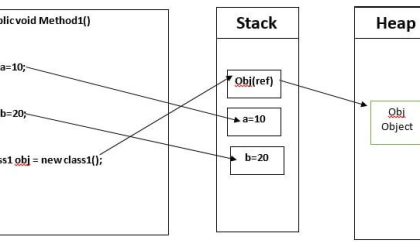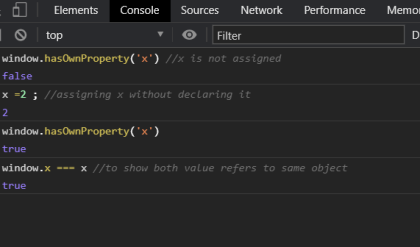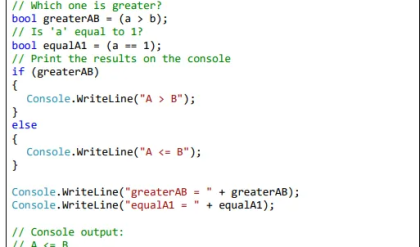The essence of programming is to control the work of the computer on all levels. This is done with the help of “orders” and “commands” from the programmer, also known as programming instructions. To “program” means to organize the work of the computer through sequences of instructions. These commands (instructions) are given in written form and are implicitly followed by the computer (respectively by the operating system, the CPU and the peripheral devices).

A sequence of steps to achieve, complete some work or obtain some result is called an algorithm. This is how programming is related to algorithms. Programming involves describing what you want the computer to do by a sequence of steps, by algorithms.
Programmers are the people who create these instructions, which control computers. These instructions are called programs. Numerous programs exist, and they are created using different kinds of programming languages. Each language is oriented towards controlling the computer on a different level. There are languages oriented towards the machine level (the lowest) – Assembler for example. Others are most useful at the system level (interacting with the operating system), like C. There are also high level languages used to create application programs. Such languages include C#, Java, C++, PHP, Visual Basic, Python, Ruby, Perl, JavaScript and others. In this book we will take a look at the C# programming language – a modern high level language. When a programmer uses C#, he gives commands in high level, like from the position of a general executive in a factory.
The instructions given in the form of programs written in C# can access and control almost all computer resources directly or via the operating system. Before we learn how to write simple C# programs, let’s take a good look at the different stages of software development, because programming, despite being the most important stage, is not the only one.
Stages in Software Development
Writing software can be a very complex and time-consuming task, involving a whole team of software engineers and other specialists. As a result, many methods and practices, which make the life of programmers easier, have emerged. All they have in common is that the development of each software product goes through several different stages:
· Gathering the requirements for the product and creating a task;
· Planning and preparing the architecture and design;
· Implementation (includes the writing of program code);
· Product trials (testing);
· Deployment and exploitation; –
· Support.
Implementation, testing, deployment and support are mostly accomplished using programming.
Gathering the Requirements
In the beginning, only the idea for a certain product exists. It includes a list of requirements, which define actions by the user and the computer. In the general case, these actions make already existing activities easier – calculating salaries, calculating ballistic trajectories or searching for the shortest route on Google maps are some examples. In many cases the software implements a previously non-existent functionality such as automation of a certain activity.
The requirements for the product are usually defined in the form of documentation, written in English or any other language. There is no programming done at this stage. The requirements are defined by experts, who are familiar with the problems in a certain field. They can also write them up in such a way that they are easy to understand by the programmers. In the general case, these experts are not programming specialists, and they are called business analysts.
Planning and Preparing the Architecture and Design
After all the requirements have been gathered comes the planning stage. At this stage, a technical plan for the implementation of the project is created, describing the platforms, technologies and the initial architecture (design) of the program. This step includes a fair amount of creative work, which is done by software engineers with a lot of experience. They are sometimes called software architects. According to the requirements, the following parts are chosen:
· The type of the application –for example console application, desktop application (GUI, Graphical User Interface application), client-server application, Web application, Rich Internet Application (RIA), mobile application, peer-to-peer application or other;
· The architecture of the software – for example single layer, double layer, triple layer, multi-layer or SOA architecture;
· The programming language most suitable for the implementation – for example C#, Java, PHP, Python, Ruby, JavaScript or C++, or a combination of different languages;
· The technologies that will be used: platform (Microsoft .NET, Java EE, LAMP or another), database server (Oracle, SQL Server, MySQL, NoSQL database or another), technologies for the user interface (Flash, JavaServer Faces, Eclipse RCP, ASP.NET, Windows Forms, Silverlight, WPF or another), technologies for data access (for example Hibernate, JPA or ADO.NET Entity Framework), reporting technologies (SQL Server Reporting Services, Jasper Reports or another) and many other combinations of technologies that will be used for the implementation of the various parts of the software system.
· The development frameworks that will simplify the development, e.g. ASP.NET MVC (for .NET), Knockout.js (for JavaScript), Rails (for Ruby), Django (for Python) and many others.
· The number and skills of the people who will be part of the development team (big and serious projects are done by large and experienced teams of developers);
· The development plan – separating the functionality in stages, resources and deadlines for each stage.
· Others (size of the team, locality of the team, methods of communication etc.).
Although there are many rules facilitating the correct analysis and planning, a fair amount of intuition and insight is required at this stage. This step predetermines the further advancement of the development process. There is no programming done at this stage, only preparation.






Comments are closed.